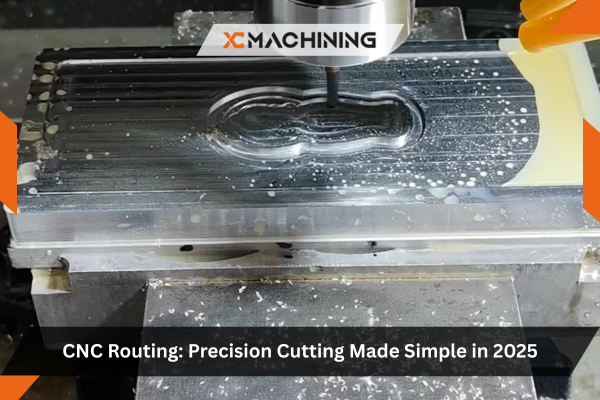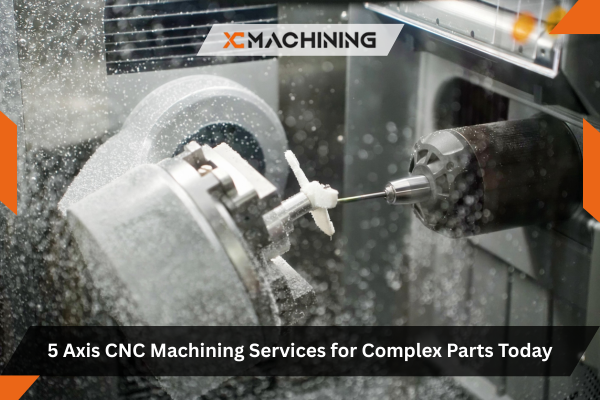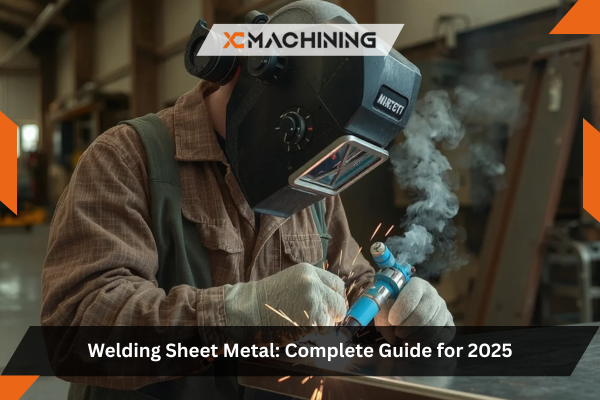Manufacturing methods have evolved dramatically over the past century, yet injection molding remains one of the most dominant and versatile production processes for creating plastic parts. From the smartphone in your pocket to the dashboard in your vehicle, injection molding services have shaped the products that define modern life. This manufacturing technique has earned its prominence not through chance, but through a compelling combination of advantages that make it the preferred choice for producing everything from intricate medical devices to large automotive components. Understanding these advantages helps manufacturers, product designers, and business owners make informed decisions about when injection molding services provide the optimal solution for their production needs.
Table of Contents
Understanding Injection Molding Services
Before exploring the advantages, it’s essential to understand what injection molding services encompass. Injection molding is a manufacturing process where molten material—typically thermoplastic or thermoset polymers is injected under high pressure into a precisely machined mold cavity. Once the material cools and solidifies, the mold opens and ejects the finished part. This cycle repeats continuously, producing identical parts with remarkable consistency.
Modern injection molding services extend beyond simply running machines. Comprehensive providers offer design consultation, mold engineering and fabrication, material selection guidance, prototype plastic injection molding, production runs from hundreds to millions of parts, quality assurance and inspection, assembly services, and secondary operations like printing, painting, or ultrasonic welding.
High Production Efficiency and Speed
One of the most significant advantages of injection molding services is exceptional production efficiency. Once tooling is complete and production parameters are optimized, plastic injection molding machines can produce parts at remarkable speeds—often with cycle times ranging from just a few seconds for small parts to a few minutes for larger components.
Production rate advantages include:
- Rapid cycle times: Most parts complete in 15-90 seconds from injection to ejection
- Automated operation: Modern machines run continuously with minimal operator intervention
- Multi-cavity molds: A single cycle can produce multiple identical parts simultaneously
- 24/7 capability: Lights-out manufacturing enables round-the-clock production
- Consistent output: Automated processes maintain steady production rates throughout runs
For manufacturers requiring thousands or millions of parts, this efficiency translates directly into lower per-unit costs and faster time-to-market. A single plastic injection molding machine operating 24 hours daily can produce tens of thousands of parts, making injection molding services ideal for high-volume production demands.
Exceptional Design Flexibility and Complexity
Injection molding services accommodate extraordinarily complex part geometries that would be difficult, impossible, or prohibitively expensive to produce through other manufacturing methods. This design freedom empowers engineers to optimize parts for functionality rather than limiting designs to accommodate manufacturing constraints.
Design capabilities include:
- Complex geometries: Undercuts, threads, intricate details, and internal features
- Thin walls: Sections as thin as 0.5mm enable lightweight designs
- Variable wall thicknesses: Strategic thickness variation optimizes strength and material usage
- Integrated features: Snap fits, living hinges, and assembly features molded directly into parts
- Overmolding: Multiple materials or colors combined in a single part
- Insert molding: Metal components encapsulated within plastic
Automotive plastic injection molding exemplifies this design flexibility. Modern vehicle interiors feature complex dashboard assemblies, intricate door panel designs, and multifunctional console components all produced through injection molding services that accommodate the sophisticated geometries required for both aesthetics and functionality.
The ability to consolidate multiple components into single molded parts reduces assembly time, eliminates fasteners, and improves overall product reliability. What might require ten separate machined parts and extensive assembly can often be produced as a single injection-molded component.
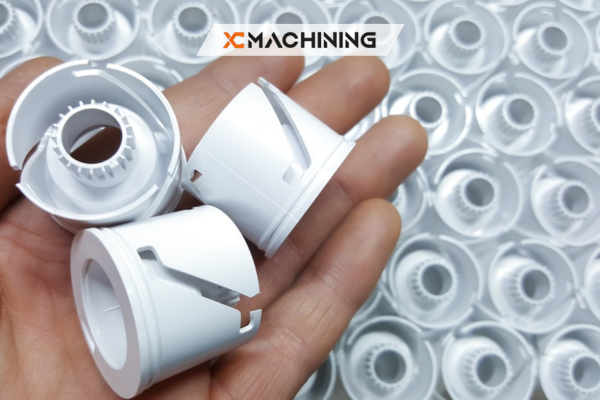
Cost-Effectiveness for Medium to High Volumes
While injection molding requires significant upfront investment in tooling, the per-unit production costs decrease dramatically as volume increases, making injection molding services extremely cost-effective for medium to high-volume production.
The economics improve further when considering total cost of ownership. Injection-molded parts often require no secondary finishing operations, arrive ready for assembly, and exhibit consistent quality that minimizes rejection rates. Material efficiency is high—most runners and sprues can be reground and reused, minimizing waste and reducing bulk plastic pellets for injection molding consumption.
For automotive plastic injection molding companies producing components in quantities of tens or hundreds of thousands annually, the per-part cost may be just pennies while alternative manufacturing methods would cost dollars per unit.
Superior Repeatability and Consistency
Injection molding services deliver exceptional repeatability—the ability to produce thousands or millions of parts with virtually identical dimensions and properties. This consistency is crucial for applications requiring interchangeability, precise assemblies, or regulatory compliance.
Consistency advantages:
- Dimensional accuracy: Tolerances as tight as ±0.1mm achievable on critical dimensions
- Weight consistency: Minimal part-to-part variation ensures uniform performance
- Mechanical property uniformity: Consistent material properties throughout production runs
- Surface finish repeatability: Identical appearance across all parts
- Color matching: Precise color consistency when using pre-colored bulk plastic pellets for injection molding
This repeatability proves particularly valuable in plastic injection molding automotive parts where components must fit precisely within tight assembly tolerances, maintain consistent strength characteristics for safety systems, and match aesthetic requirements across thousands of vehicles. Medical device manufacturers similarly depend on this consistency to meet stringent regulatory requirements and ensure patient safety.
Advanced process control systems monitor critical parameters—injection pressure, temperature, cooling time, and fill rates—making real-time adjustments to maintain optimal conditions throughout production runs. This technological sophistication ensures the first part and the millionth part exhibit virtually identical characteristics.
Extensive Material Options
Modern injection molding services work with an extraordinary range of materials, enabling designers to select polymers optimized for specific performance requirements, environmental conditions, and regulatory standards.
Common material categories for plastic injection molding applications:
Commodity thermoplastics: Polypropylene (PP), Polyethylene (PE), Polystyrene (PS), and PVC injection molding applications offer economical solutions for general-purpose parts.
Engineering thermoplastics: ABS plastic injection molding, Polycarbonate (PC), Nylon (Polyamide), Acetal (POM), and Polyester (PBT/PET) provide superior mechanical properties for demanding applications.
High-performance polymers: PEEK, PEI, PPS, and LCP serve extreme-temperature, high-strength, or chemically aggressive environments.
Elastomers: TPE, TPU, and silicone create flexible, rubber-like parts through injection molding.
Specialty materials: Glass-filled, carbon-fiber reinforced, flame-retardant, UV-stabilized, conductive, and medical-grade formulations address specific performance requirements.
Beyond traditional polymers, emerging ceramic injection molding applications extend the process to technical ceramics, creating complex ceramic parts for electronics, aerospace, and medical implants. Liquid silicone rubber (LSR) injection molding produces medical-grade seals, gaskets, and components requiring biocompatibility and flexibility.
This material versatility enables injection molding services to serve virtually every industry with appropriate material solutions. Automotive applications might use glass-filled nylon for structural brackets, TPE for weather seals, and polycarbonate for light lenses—all produced through injection molding with materials optimized for their specific functions.
Minimal Post-Production Processing
Parts produced through injection molding services typically emerge from molds ready for use or requiring minimal finishing operations. This contrasts sharply with manufacturing methods like machining or 3D printing that often demand extensive post-processing.
Post-production advantages:
- Finished surface quality: Molded surfaces achieve excellent finish directly from the mold
- No assembly required: Complex multi-component designs consolidated into single parts
- Integral color: Using pre-colored bulk plastic pellets for injection molding eliminates painting
- Functional features: Threads, snap fits, and assembly features molded in place
- Reduced handling: Minimal secondary operations reduce labor and logistics costs
When post-processing is required—printing logos, ultrasonic welding assemblies, or applying coatings—injection-molded parts’ dimensional consistency simplifies automation of these secondary operations. The predictable geometry and surface characteristics enable reliable automated processes.
Reduced Material Waste
Environmental considerations and cost pressures make material efficiency increasingly important. Injection molding services excel at minimizing waste through several mechanisms that maximize material utilization.
Material efficiency benefits include:
Precise material usage: Computer-controlled injection ensures exact material quantities, preventing excess.
Regrind capability: Runners, sprues, and rejected parts are ground and reintroduced into production (typically 15-25% regrind ratio).
Minimal scrap: Once optimized, production generates minimal rejected parts compared to machining processes that remove 70-90% of material.
Optimized designs: Thin-wall molding and strategic material placement use minimum polymer while maintaining strength.
For large-volume production, these material savings compound significantly. An automotive manufacturer producing millions of plastic injection molding automotive parts annually can save substantial costs through efficient material utilization while simultaneously reducing environmental impact.
Scalability from Prototype to Production
Modern injection molding services accommodate the entire product development lifecycle—from initial concept validation through full-scale production—providing valuable continuity throughout the development process.
Scalability pathway:
Stage 1 – Prototype Development: Prototype plastic injection molding uses aluminum tooling or rapid tooling techniques to produce small quantities (10-1,000 parts) for design validation, functional testing, and market evaluation. Lower tooling costs and faster lead times enable iteration without massive investment.
Stage 2 – Bridge Production: As designs mature and volumes increase to thousands of parts, modified prototype tooling or bridge tooling supports initial production, pilot manufacturing, or market introduction while final production tooling is being fabricated.
Stage 3 – Full Production: High-volume production utilizes hardened steel tooling designed for millions of cycles, multi-cavity configurations for maximum efficiency, and fully automated cells for optimal productivity.
This scalability enables companies to validate products before committing to expensive production tooling. Design refinements discovered during prototype plastic injection molding phases can be incorporated before final tool construction, avoiding costly modifications later.
Enhanced Product Quality and Structural Integrity
Parts produced through injection molding services typically exhibit superior structural integrity compared to alternative manufacturing methods, particularly 3D printing or assembly-based construction.
Quality characteristics:
- Molecular bonding: Material bonds at the molecular level during molding, creating uniformly strong parts
- No delamination: Unlike 3D printing’s layer-by-layer construction, injection molding creates monolithic parts without weak inter-layer boundaries
- Consistent density: Uniform material distribution prevents voids or porosity that compromise strength
- Predictable performance: Well-characterized material properties enable accurate engineering analysis
- Fatigue resistance: Properly molded parts withstand millions of stress cycles
For plastic injection molding automotive parts experiencing vibration, thermal cycling, and mechanical stress throughout vehicle lifetimes, this structural integrity ensures reliable long-term performance. Safety-critical components particularly benefit from injection molding’s predictable, uniform material properties.
Rapid Turnaround for High Volumes
Once production begins, injection molding services deliver completed parts faster than virtually any alternative manufacturing method for high volumes. This speed-to-market advantage provides competitive benefits in fast-moving industries.
A single plastic injection molding machine producing parts with 30-second cycle times generates 2,880 parts per 24-hour period. Multi-cavity molds multiply this output—a 4-cavity mold produces 11,520 parts daily. For urgent production needs or seasonal demand spikes, this rapid output capability proves invaluable.
Automotive plastic injection molding companies leverage this speed when launching new vehicle models, ramping production from pilot builds to full-scale manufacturing in compressed timeframes. Consumer electronics manufacturers similarly depend on rapid production ramp-up to capture market opportunities during product launch windows.
Injection Molding Applications Across Industries
The versatility of injection molding services enables applications spanning virtually every sector:
Automotive Industry
Automotive plastic injection molding dominates vehicle manufacturing, producing interior trim panels and dashboard components, exterior body panels and bumper fascias, under-hood components for engine systems, lighting lenses and housings, electrical connectors and wiring harness components, and fluid reservoirs and cooling system parts.
Modern vehicles contain hundreds of injection-molded components. The shift toward electric vehicles further increases plastic injection molding automotive parts usage as manufacturers pursue weight reduction to extend driving range.
Consumer Electronics
Electronic device manufacturing relies heavily on injection molding for device housings and enclosures, internal structural components, buttons, switches, and control interfaces, connector housings and ports, battery compartments and charging docks, and camera bezels and lens assemblies.
The demanding aesthetics, tight tolerances, and high production volumes characteristic of consumer electronics make injection molding services the default manufacturing choice for these applications.
Medical Devices
Medical device manufacturers utilize injection molding for disposable syringes and drug delivery devices, diagnostic test cartridges and laboratory consumables, surgical instrument handles and components, pharmaceutical packaging and medication containers, dental appliances and orthodontic components, and implantable device components (using biocompatible materials).
Medical-grade materials, cleanroom molding capabilities, and documentation requirements make specialized medical injection molding services essential for this regulated industry.
Industrial and Commercial Products
Beyond consumer-facing applications, industrial plastic injection molding applications include electrical enclosures and junction boxes, tools and equipment housings, fasteners, clips, and assembly components, material handling containers and pallets, agricultural equipment components, and construction materials and hardware.
Specialty Applications
Emerging ceramic injection molding applications produce technical ceramic components for electronics substrates, aerospace structural parts, medical implant components, cutting tools and wear parts, and sensor housings for harsh environments.
PVC injection molding applications serve construction fittings and plumbing components, electrical conduit and boxes, window profiles and sealing systems, and medical tubing and fluid handling parts.
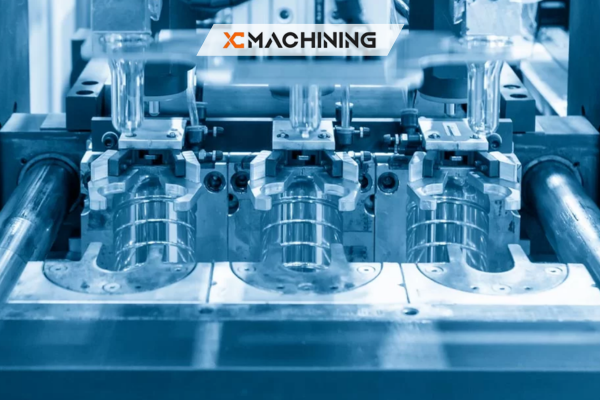
Advanced Capabilities of Modern Injection Molding Services
Contemporary injection molding services offer capabilities that extend far beyond basic part production:
Scientific molding: Data-driven process optimization ensures maximum quality and consistency through precise control of all process variables.
Insert molding: Metal inserts, electronics, or other components are positioned in molds before injection, encapsulating them within the plastic part.
Overmolding: Multiple materials or colors are molded sequentially onto the same part, creating soft-touch grips, multi-color products, or functional combinations of rigid and flexible materials.
In-mold decoration: Graphics, textures, or functional coatings are applied during the molding process, eliminating secondary decorating operations.
Gas-assisted molding: Nitrogen injection creates hollow sections within parts, reducing weight and material usage while maintaining strength.
Micro-molding: Specialized equipment produces parts weighing just milligrams with features measured in micrometers for medical and electronics applications.
Conclusion
The advantages of injection molding services high production efficiency, design flexibility, cost-effectiveness at volume, superior repeatability, extensive material options, minimal waste, scalability, and enhanced quality explain why this manufacturing process dominates plastic part production globally. From ABS plastic injection molding for consumer products to specialized automotive plastic injection molding companies serving the transportation industry, these services enable the mass production of high-quality plastic components that modern life depends upon.
Whether producing prototype plastic injection molding runs to validate new designs or manufacturing millions of plastic injection molding automotive parts for global vehicle production, injection molding services provide unmatched capabilities for transforming bulk plastic pellets for injection molding into the functional, aesthetic, and structural components that define contemporary products.
Understanding these advantages enables informed manufacturing decisions, helping companies determine when injection molding services offer optimal solutions for their production needs. As materials advance, plastic injection molding machines become more sophisticated, and injection molding applications continue expanding, this versatile manufacturing process will remain central to producing the plastic components that shape our world.
FAQs
Why are injection molds so expensive upfront?
They’re machined from sturdy aluminum or steel to survive hundreds of thousands of high-pressure cycles.
How long does a steel mold last?
With good maintenance, it can exceed a million shots before refurbishing.
Can recycled plastic be used in injection molding?
Yes, many resins accept up to 30 % regrind without hurting quality, depending on product requirements.
Is injection molding only for plastics?
Mostly, but metal-injection molding exists for tiny, high-detail metal parts.
How fast can I get first samples?
Prototype aluminum tools can deliver molded samples in 2–4 weeks after finalizing the CAD.


